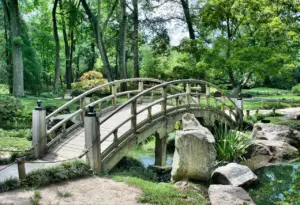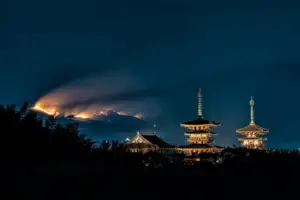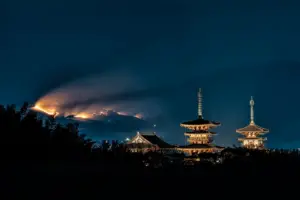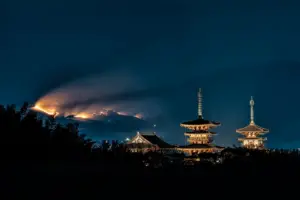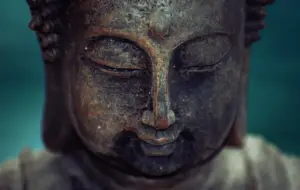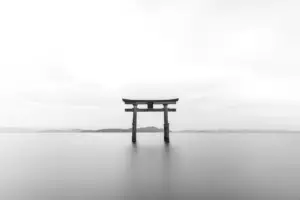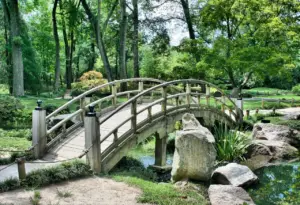If you’re a lover of art, history, and archaeology, Nara is the destination for you. This ancient city, located in the Kansai region of Japan, has some of the best museums in the country.
From the Nara National Museum to the Nara Prefectural Museum of Archaeology, you’ll find an array of exhibits that will transport you back in time to Japan’s rich cultural past.
As you explore Nara’s museums, you’ll be struck by the attention to detail and the depth of knowledge on display. The curators have worked hard to create exhibits that are both informative and engaging, so you can learn about Japan’s history, art, and culture in a fun and interactive way.
Whether you’re interested in the ancient pottery of the Jomon period or the intricate sculptures of the Nara period, you’ll find something to captivate your imagination in Nara’s museums.
So, without further ado, let’s dive into the best museums in Nara for art, history, and archaeology.
Key Takeaways
- Nara is a destination for art, history, and archaeology lovers with some of the best museums in Japan.
- The exhibits in Nara’s museums transport visitors back in time to Japan’s rich cultural past and are informative and engaging.
- The museums offer a unique opportunity to see rare and valuable pieces of art.
- The Nara National Museum, National Museum of History, Nara Palace Site Exhibition Hall, and Heijo-kyo Capital Exhibition Hall are must-visit destinations for anyone interested in the history and culture of Japan.
Nara National Museum
You’ll love exploring the Nara National Museum, where you can admire exquisite Buddhist art and learn about the rich cultural history of Nara.
The museum houses a vast collection of Japanese Buddhist art, including paintings, sculptures, and decorative arts. The exhibits are organized chronologically, with displays from the Asuka, Nara, Heian, Kamakura, Muromachi, and Edo periods, providing visitors with a comprehensive overview of the evolution of Japanese Buddhist art.
The museum also features temporary exhibitions that showcase different aspects of Japanese art and culture. These exhibits are often curated in collaboration with other museums and institutions, both in Japan and abroad, making them a unique opportunity to see rare and significant works of art.
The museum’s location in Nara Park adds to its allure, as visitors can take a leisurely stroll around the park and visit the nearby temples and shrines, making for a perfect day trip.
Nara National Museum of History
Visitors can explore the vast collection of artifacts and exhibits at the National Museum of History in Nara. The museum is dedicated to preserving and showcasing the rich history of Japan, particularly during the Nara period (710-794).
Here are three highlights of the museum:
-
The Nara Palace Site Exhibition Hall: This exhibit showcases the remains of the ancient Nara Palace, which was the center of political and cultural activities during the Nara period. Visitors can see the foundations of the palace buildings, as well as artifacts such as ceramics, mirrors, and jewelry.
-
The Heijo-kyo Capital Exhibition Hall: This exhibit displays the history and artifacts of the ancient capital city of Nara, which was established in 710 as the first permanent capital of Japan. Visitors can see various objects related to the city’s administration, religion, and culture.
-
The Yamato Bunkakan Exhibition Hall: This exhibit focuses on the prehistoric and early historic periods of Japan’s Yamato region, which includes Nara. Visitors can see various objects related to the region’s development, such as pottery, stone tools, and burial objects.
Overall, the National Museum of History in Nara is a must-visit for anyone interested in Japanese history and culture. The exhibits are well-curated and informative, providing a fascinating glimpse into the past.
Nara Prefectural Museum of Archaeology
Are you interested in exploring prehistoric and ancient periods? The Nara Prefectural Museum of Archaeology offers displays on Jomon and Yayoi cultures. This provides a fascinating insight into the development of human civilization.
Whether you’re a history buff or just curious about the past, this museum is a must-visit destination in Nara.
Explore Prehistoric and Ancient Periods
Discover fascinating artifacts and relics from prehistoric and ancient times at Nara’s top museums. The Nara Prefectural Museum of Archaeology is one such museum that offers a glimpse into the rich history of the region.
Here, you can explore the prehistoric and ancient periods through a collection of artifacts and exhibits that illustrate the development of human civilization in Nara. As you wander through the museum, you’ll encounter a variety of fascinating exhibits.
Here are just a few highlights to look out for:
- The Yoshino-Kawakami-Kudara pottery: This collection of pottery dates back to the Yayoi period (300 BC-300 AD) and is believed to have been used for religious ceremonies.
- The Ishibutai tumulus: This massive stone tomb was built during the late 6th century and is believed to have been the final resting place of a powerful local ruler.
- The Asuka period exhibit: This exhibit showcases artifacts from the Asuka period (592-710 AD), a time of great cultural and political change in Japan. Here, you can see everything from Buddhist statues to ancient coins and jewelry.
Overall, the Nara Prefectural Museum of Archaeology is a must-visit destination for anyone interested in the history of Japan. With its impressive collection of artifacts and exhibits, you’re sure to gain a deeper appreciation for the rich cultural heritage of Nara.
See Displays on Jomon and Yayoi Cultures
As you step into the exhibit, you’ll be transported back in time to witness the intricate Jomon and Yayoi cultures firsthand.
The Jomon period, which lasted from around 14,000 BCE to 300 BCE, is known for its unique pottery and cord-marked vessels, which were used for cooking and storage.
The Yayoi period, which followed the Jomon period and lasted from around 300 BCE to 300 CE, saw the introduction of rice cultivation, iron tools, and bronze artifacts.
The displays in the museum provide a fascinating insight into the daily lives of these ancient peoples. You’ll see examples of the pottery, tools, and weapons they used, as well as jewelry and other decorative items.
By examining these artifacts, you’ll gain a better understanding of how these cultures evolved and adapted over time.
Whether you’re a history buff or simply interested in learning more about Japan’s rich cultural heritage, the Jomon and Yayoi exhibits are not to be missed.
Learn About the Development of Human Civilization
Step back in time and witness the evolution of human civilization through the fascinating exhibits at the museum.
As you walk through the halls, you’ll encounter displays that showcase the various stages of human development, from the Stone Age to the Bronze Age and beyond.
You’ll learn about the tools and techniques that our ancestors used to survive, as well as the cultural and societal changes that occurred over time.
One of the most interesting exhibits is the one that focuses on the Neolithic period, which saw the rise of agriculture and the formation of early human settlements.
You’ll see artifacts that were used for farming, such as plows and sickles, as well as items that were used for religious and cultural practices.
As you explore this exhibit, you’ll gain a deeper understanding of how human civilization developed and how it continues to evolve today.
Nara City Museum of Photography
You’ll be struck by the stunning visual storytelling on display at the Nara City Museum of Photography. As you enter the museum, you’ll be immediately enveloped by the sheer beauty and power of the photographs.
Here are five reasons why you should make a visit to this museum a priority:
- The museum’s collection is one of the largest in all of Japan, with over 42,000 photographs covering a wide range of subjects.
- The exhibits are curated in a way that tells a compelling story, drawing you in and immersing you in the world of the photographs.
- The museum showcases both historical and contemporary photography, giving you a sense of the evolution of the art form over time.
- The museum’s location in Nara, one of Japan’s oldest and most culturally significant cities, adds to the unique and enriching experience of the visit.
- The knowledgeable and friendly staff are always on hand to answer any questions you may have, deepening your understanding and appreciation of the art of photography.
As you explore the museum, you’ll be struck by the way the photographs capture the essence of the world around us. From breathtaking landscapes to intimate portraits, the images on display will leave you with a sense of wonder and awe.
The museum’s collection is a testament to the power of photography as a means of storytelling, and you’ll leave with a newfound appreciation for the art form. Whether you’re a seasoned photographer or simply someone who loves beautiful images, a visit to the Nara City Museum of Photography is an experience you won’t soon forget.
Nara Christ Museum
If you’re a fan of religious art, you won’t want to miss the Nara Christ Museum. This museum is dedicated to the art of Christianity and offers a unique insight into the religion’s history and culture.
The museum’s collection includes over 1,000 pieces of art, ranging from paintings and sculptures to manuscripts and textiles. Many of the pieces are of great historical significance, and some have been designated as National Treasures of Japan.
One of the most impressive exhibits at the Nara Christ Museum is the collection of Buddhist statues that have been converted to Christian figures. These statues were created during a period of cultural exchange between Japan and Europe in the 16th century, when Japanese artists began to incorporate Christian themes and iconography into their work.
The museum offers a fascinating glimpse into this period of Japanese art history, and provides a unique opportunity to see rare and valuable pieces of art.
Naramachi Museum
Now that you’ve learned about the religious art at the Nara Christ Museum, let’s turn our attention to the Naramachi Museum. This museum offers a glimpse into the daily life of the merchants and craftsmen who lived in the Naramachi district during the Edo period.
Located in a beautifully preserved machiya (traditional wooden townhouse), the Naramachi Museum features exhibits of household items, clothing, and tools used by the people who once inhabited the area. Visitors can also explore the house itself, which is a fascinating example of traditional Japanese architecture.
As you wander through the rooms, you’ll notice sliding doors, tatami mats, and paper lanterns, all of which contribute to the peaceful, serene atmosphere of the museum. Whether you’re interested in history, architecture, or simply want to experience a slice of traditional Japanese life, the Naramachi Museum is definitely worth a visit.
Nara Craft Museum
Don’t miss out on the chance to explore the exquisite craftsmanship at the Nara Craft Museum.
This museum showcases the traditional crafts of Nara, including lacquerware, pottery, and textiles. The exhibits highlight the intricate techniques used by local artisans and the historical significance of each craft.
One of the most impressive displays at the Nara Craft Museum is the collection of lacquerware. The museum features pieces adorned with intricate designs and vibrant colors, showcasing the skill and attention to detail required to create these works of art. Visitors can also learn about the history and cultural significance of lacquerware in Japan.
The Nara Craft Museum is a must-visit for anyone interested in traditional Japanese crafts and the rich history of Nara.
Nara National Museum of Modern Art
If you’re interested in discovering modern Japanese art, you should definitely check out the Nara National Museum of Modern Art.
This museum features a wide variety of exhibits on contemporary art and sculpture, showcasing some of the best and most innovative artists in Japan today.
In addition, you’ll also have the opportunity to learn about the influence of Western art on Japanese culture. This makes the museum a must-visit for anyone who wants to gain a deeper understanding of Japanese art and history.
Discover Modern Japanese Art
Experience the breathtaking beauty of modern Japanese art at the top museums in Nara. You’ll be amazed at the variety of styles and techniques on display, from traditional Japanese painting to contemporary installations.
Here are four must-see exhibits that showcase the best of modern Japanese art:
-
‘The Birth of Modern Art in Japan’ at the Nara National Museum of Modern Art is a comprehensive survey of the early 20th century art movement that brought Western techniques and perspectives to Japanese artists. You’ll see works by influential figures such as Okakura Tenshin and Uemura ShÃ…Âen that helped shape the modern Japanese art scene.
-
‘The World of Yayoi Kusama’ at the Nara Prefectural Museum of Art features the iconic polka dot motifs and other signature styles of one of Japan’s most famous contemporary artists. This exhibit showcases Kusama’s prolific output over the past six decades, including paintings, sculptures, and installations.
-
‘The Art of Hideo Hagiwara’ at the Nara City Museum of Photography showcases the stunning black-and-white photography of one of Japan’s most celebrated artists. Hagiwara’s work captures the beauty of traditional Japanese architecture and landscapes, as well as the vibrancy of urban life.
-
‘The Sculpture of Isamu Noguchi’ at the Noguchi Museum Nara showcases the work of one of the most influential sculptors of the 20th century. Noguchi’s unique approach to form and materiality is on full display in this exhibit, which includes some of his most famous works such as ‘Red Cube’ and ‘Sky Gate’.
See Exhibits on Contemporary Art and Sculpture
You’ll definitely want to check out the exhibits on contemporary art and sculpture at Nara’s best museums. These exhibits showcase works by some of the most innovative and boundary-pushing artists of our time.
From installations that challenge traditional notions of space and time, to sculptures that push the limits of materials and form, these exhibits are sure to inspire and provoke thought.
One of the highlights of these exhibits is the focus on Japanese contemporary art. Many of the artists featured in these exhibits are at the forefront of the Japanese art scene, creating works that reflect the unique cultural and historical context of Japan.
At the same time, these works also engage with global issues and ideas, making them relevant to audiences around the world. Whether you’re a fan of contemporary art or simply interested in exploring new ideas and perspectives, these exhibits are not to be missed.
Learn About the Influence of Western Art on Japanese Culture
Discover how Western art has influenced Japanese culture by exploring the exhibits at these top-notch galleries. As you wander through the halls, you’ll be struck by the fusion of traditional Japanese aesthetics and the bold experimentation of Western artists.
Here are just a few highlights to keep an eye out for:
-
The incorporation of perspective: One of the most significant ways in which Western art has influenced Japanese aesthetics is through the use of perspective. In traditional Japanese art, there is often very little sense of depth or spatial relationships between objects. However, as you explore these exhibits, you’ll see how Japanese artists began incorporating Western techniques of perspective, creating new and dynamic compositions.
-
The influence of Impressionism: Another major influence of Western art on Japan has been the rise of Impressionism. This movement, with its focus on capturing the fleeting moments of everyday life, resonated deeply with Japanese artists. As a result, you’ll see many works that feature soft, pastel colors and loose brushwork, evoking a sense of tranquility and serenity.
-
The use of new materials: Finally, Western art has introduced Japanese artists to new materials and techniques that have expanded the possibilities of their work. For example, you’ll see sculptures made from steel and glass, or paintings that incorporate collage elements. These innovative approaches have helped to blur the lines between traditional and contemporary art, creating a vibrant and exciting cultural landscape.
Frequently Asked Questions
What are the opening hours and admission fees for each museum?
To answer your question about opening hours and admission fees for each museum, it’s important to note that each museum has its own schedule and pricing structure. Some museums may have varying hours depending on the day of the week or time of year. Admission fees may also differ based on factors such as age, student status, or whether you’re a resident of Nara or not.
It’s best to check the individual museum’s website or call ahead to get the most up-to-date information. However, keep in mind that the cost of admission is often worth it for the opportunity to see some of the world’s most stunning art, artifacts, and historical treasures.
Are there any special exhibitions or events happening at the museums currently?
If you’re interested in checking out some special exhibitions or events at Nara’s museums, you’re in luck. There are currently a number of exciting offerings taking place.
At the Nara National Museum, you can catch the ‘Masterpieces from the Tokyo National Museum’ exhibition, which features a stunning collection of Japanese art and artifacts.
Meanwhile, the Nara Prefectural Museum of Art is hosting a special exhibit on the work of the influential Japanese artist Takehisa Yumeji.
And if you’re interested in archaeology, don’t miss the ‘Ancient Capitals of Japan: Nara and Kyoto’ exhibit at the Nara City Museum of Archaeology.
With so much to see and do, you’re sure to have a great time exploring the museums of Nara.
Are the museums wheelchair accessible and equipped with facilities for people with disabilities?
Yes, the museums in Nara are wheelchair accessible and equipped with facilities for people with disabilities. The museums have made efforts to be inclusive and accessible to all visitors, regardless of physical ability.
Wheelchair ramps and elevators are available to allow easy access to all areas of the museums. In addition, there are accessible restrooms and parking spaces, as well as staff available to assist visitors with disabilities.
The museums have also taken steps to make their exhibits and displays accessible, with large-print materials available and audio guides for those who are visually impaired.
Overall, the museums in Nara have made accessibility a priority, ensuring that everyone can enjoy the rich history, art, and archaeology on display.
Can I take photographs inside the museums?
Yes, you can take photographs inside most of the museums in Nara. However, it’s important to note that some museums may have specific restrictions on photography in certain areas or for certain exhibits.
It’s always best to check with the museum staff or signage before taking any photographs. Additionally, some museums may prohibit the use of flash photography or tripods, so be sure to follow any guidelines provided.
Overall, Nara’s museums offer a wealth of opportunities to capture stunning photographs of art, history, and archaeology. Just be respectful of any rules and guidelines in place to ensure a positive experience for all visitors.
Are there any restrictions on bringing food or drinks inside the museums?
Yes, there are restrictions on bringing food and drinks inside the museums in Nara. As a general rule, food and drinks are not allowed inside the exhibition areas and galleries. This is to ensure the preservation and protection of the valuable artifacts and artworks on display.
However, most museums in Nara have designated areas where you can enjoy your snacks and drinks. These areas are usually located near the entrance or in the museum’s café or restaurant. It’s always a good idea to check with the museum’s staff or website beforehand to know the specific rules and regulations regarding food and drinks.
Remember to respect the museum’s policies and help preserve the cultural heritage for future generations to enjoy.
Conclusion
Congratulations! You’ve explored the best museums in Nara, Japan. The city is known for its rich cultural heritage, and these museums offer a glimpse into its art, history, and archaeology.
The Nara National Museum is a must-visit for art enthusiasts. The Nara National Museum of History will take you on a journey through Japan’s past. The Nara Prefectural Museum of Archaeology and Naramachi Museum offer an insight into the city’s ancient roots. The Nara City Museum of Photography, Nara Christ Museum, and Nara Craft Museum are also worth exploring.
These museums are not just a treat for the eyes but also offer an enriching learning experience. They showcase Japan’s history, culture, and art in a unique way. Whether you’re a history buff or an art lover, Nara’s best museums have something for everyone.
So, visit these museums and immerse yourself in the rich cultural heritage of Nara.













